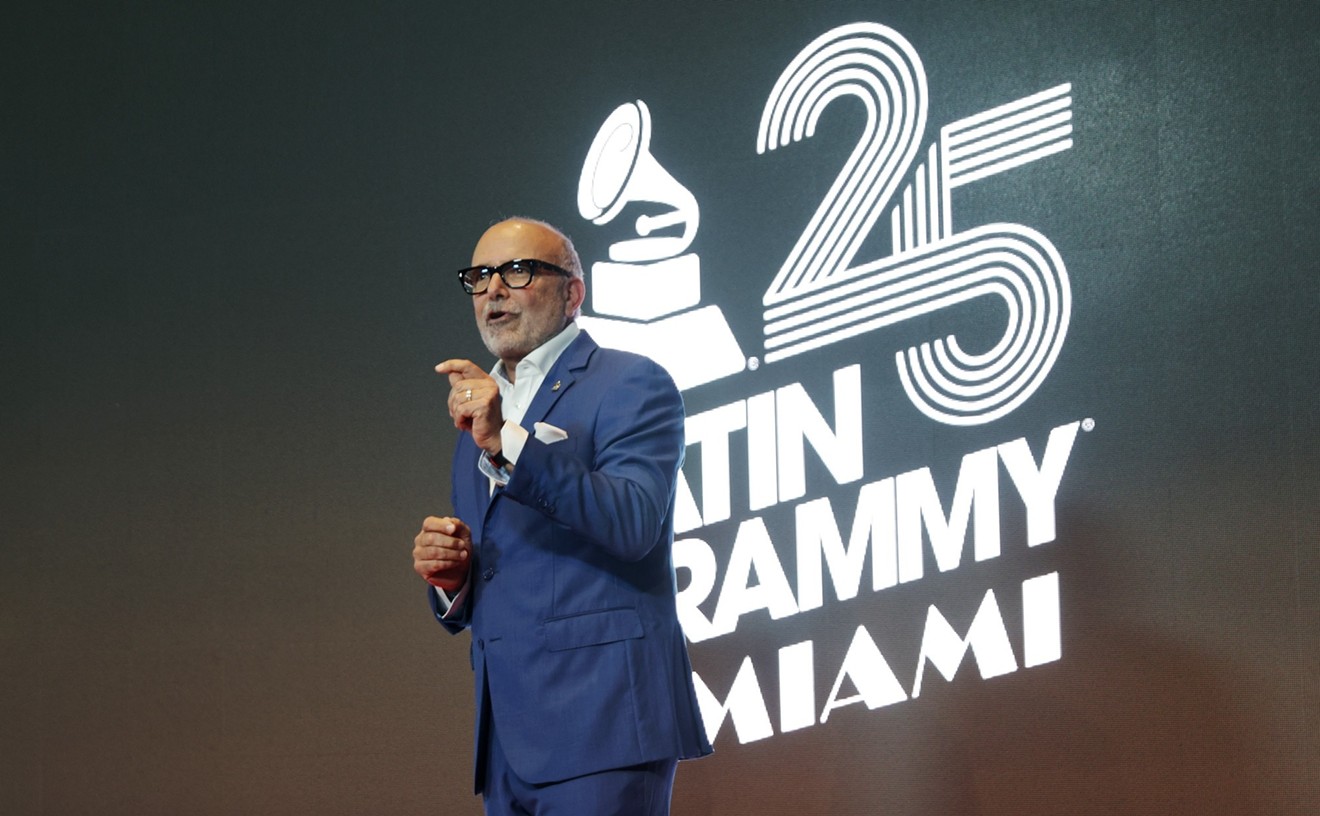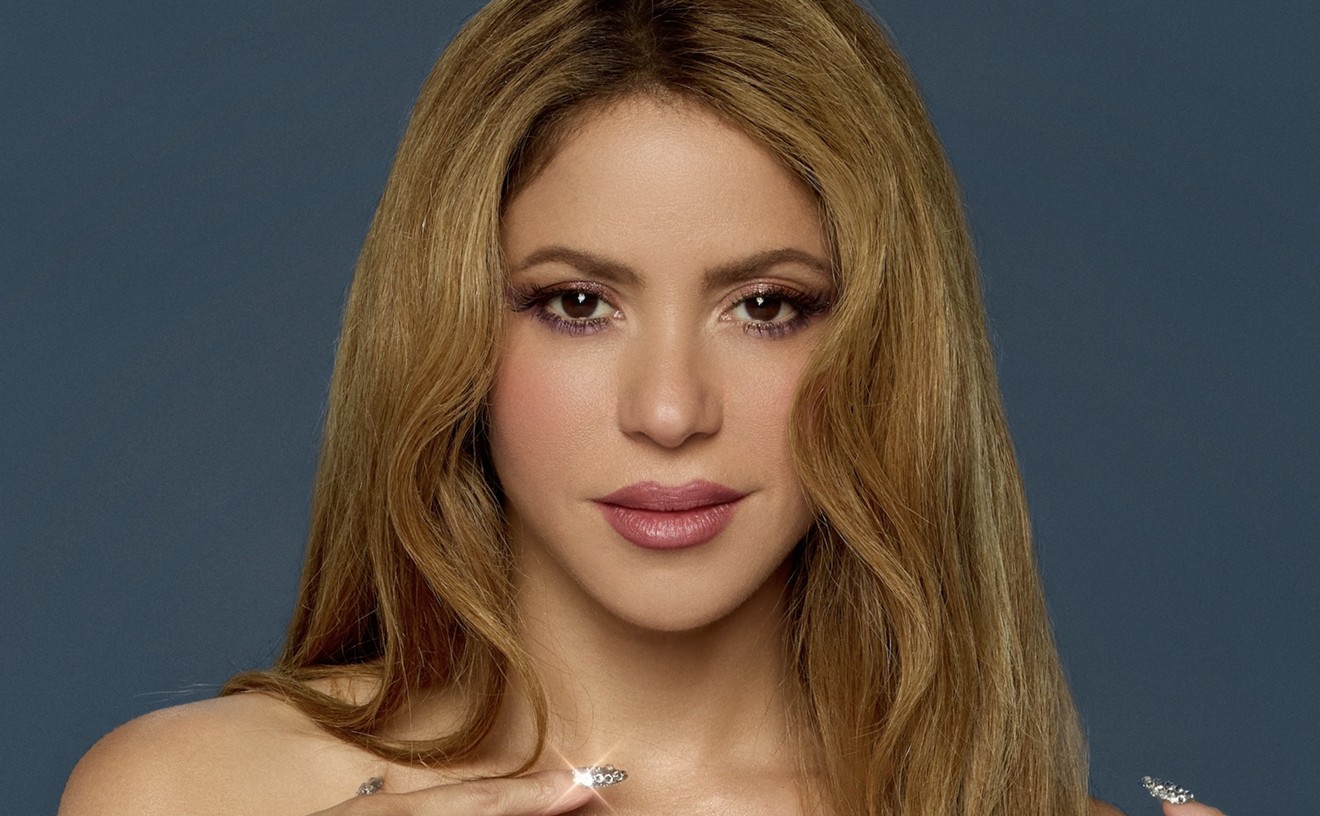It's Monday night, and people from all over South Florida are trickling into the Harold Solomon Tennis Institute for the weekly swing dance in Fort Lauderdale. Some are dressed in jeans and Converse sneakers, while others are in their Sunday best. It doesn't really matter, as long as they are prepared to dance -- a lot.
Swing Out South Florida has been putting on Monday Night Swing for about four years, but swing dancing in South Florida has been going on much longer. According to dancer Izzy Shniadoski, the swing craze began in Miami and Fort Lauderdale in the '90s during a swing revival that swept the nation.
Movies like Swing Kids and bands such as Big Bad Voodoo Daddy fueled the scene. Swing dancing was already big in places like California and New York, but in '97 and '98 it gained national media attention and spread like wildfire. Shniadoski avidly joined the craze in '99 after seeing the Cherry Poppin' Daddies at the Broward Fair.
"In those days, we used to get 300 to 500 people a night," he says. "They brought a lot of bands that toured through. That was my introduction, and I got caught up in it. I started taking lessons, and it absorbed my life. From there we just kept dancing, and we started to travel -- we went to Orlando to go see bands, and Tampa. And Florida developed this really nice community of dancers, and it became a lifestyle in a way -- a subculture of dance that we were all involved in, and it just grew and grew."
Then, around 2001 and 2002, the swing craze sort of died, but the core group that embraced the dance kept it going. Shniadoski, who was an organizer for 12 years, handed leadership to Tamar Mucha and others in 2010. Over time, there were highs and lows in popularity, but they always had new people coming in who discovered the dance and wanted to learn. When Mucha moved to Orlando, she passed the responsibility on again.
"The gospel of swing continues from one group to the next," Shniadoski says. "A whole group of young, new dancers have come in and are creating a new excitement."
Julian Ehrlich, Andrew Whiting, and Rishona Cann are the newest organizers who have taken the torch to keep swing dance going. "It's like working a second full-time job you don't get paid for," Whiting says. "But you look at the pictures Julian takes every week, and everyone has a smile on their face. There are no sad pictures, and that's a huge reward in and of itself."
Roberto Molina of Miami Shores had been taking salsa lessons for months but decided to give swing a try when his friend Bradley Rogers invited him.
"It's great," Molina says. "I didn't expect to be challenged as much as I am. I'm sweating, and it's very athletic."
He also says swing is a stark contrast to the salsa scene of Miami. "It's a mix of different generations and different styles of people. In Miami, there were a lot more young people, it was more dressy, more high heels, and a lot more... South Beach. This is more down-home, and it kind of brings you in because you don't feel like people are trying hard to be something else."
At Monday Night Swing, your first time is always free. After that, both the lesson and the DJ dance are covered in the $12 admission, which is a lot less than a typical price at a dance studio. Students with ID can get in for half that amount.
Solomon ZurSchmiede is a recent high-school graduate who has been attending the dance since the summer of 2013. He and his two brothers come every week and are now performing aerials. "I look forward to coming to this dance all week," ZurSchmiede says.
"Monday is usually the day you don't look forward to. I love the idea that you can dance with somebody you've never met before and you might not even speak their language, but with dancing, it's like its own language... so I just want to get better at that language. I want to have better vocabulary, and I want to be more articulate in my dancing." Swing Out South Florida has welcomed people from Slovakia, Canada, Turkey, Israel, and other countries.
Committee member Rishona Cann says, "I love being able to bring people together from all facets of life and the sense of family we create by doing so."
For all three, the challenge of running the dance week-to-week is a great one, but it was either step up and lead or let the dance die.
"For years I was fascinated with swing dancing, and when life took me to Boca Raton, I thought, 'This is a perfect opportunity to start learning,' " Ehrlich says. "Fast-forward two years and I'm one of the organizers. When the opportunity presented itself, I stepped up to preserve the dance for the community."
Goals are to secure Swing Out South Florida a nonprofit status and to grow the scene to bring in more bands, professional teachers, and organize larger and better events.
Best advice for newcomers: "Don't be afraid," Shniadoski says. "It's only dancing. And it's fun."
Swing Out South Florida. 7:30 to 11 p.m. Mondays at the Harold Solomon Tennis Institute, 600 Tennis Club Drive, #200, Fort Lauderdale. First class is free, then $12. Students are $7. Visit swingoutsouthflorida.com.
New Party Rules for Millennials
Top 20 Sexiest R&B Songs from the '90s to Today
Ten Best Florida Metal Bands of All Time
Ten Most Annoying Drunk Dudes You Meet at a Bar
Follow @CountyGrind










